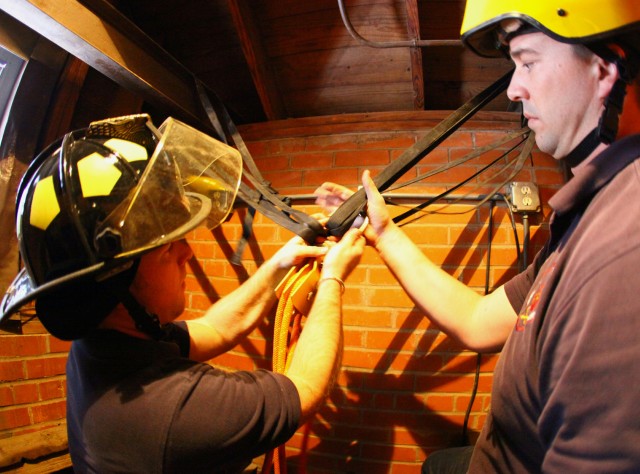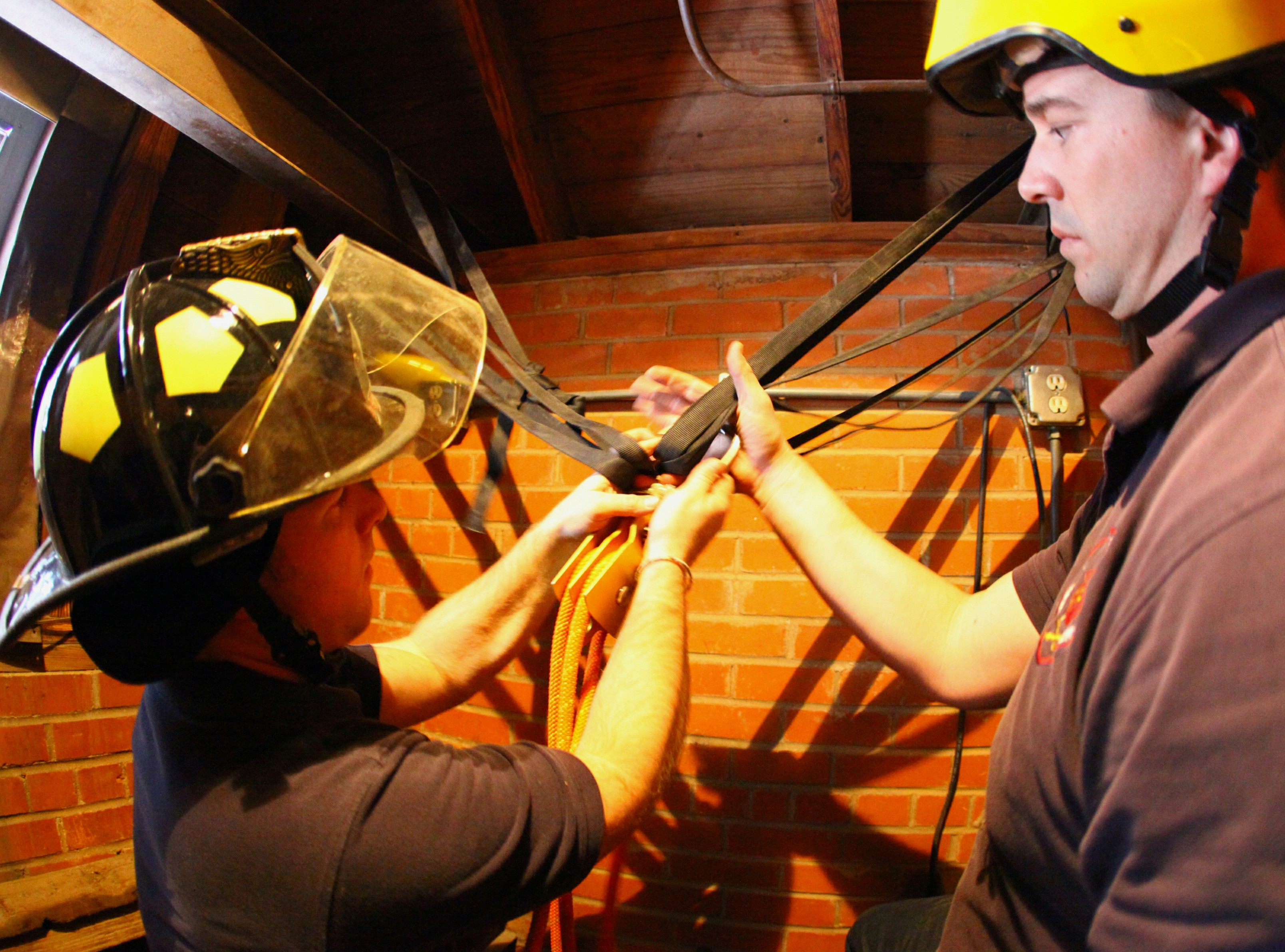
FORT SILL, Okla.-- An elderly maintenance man working in the attic space of a three-story building here suddenly becomes weak and dizzy. He is unable to get down from the crawl space, much less finish the work order. He radios in his situation to his supervisor, who calls 9-1-1.
Fort Sill Fire and Emergency Services firefighters respond and climb the building's internal ladder to reach the stricken worker. Talking to him, they find out he is diabetic, disoriented and belligerent. The victim now must be medically stabilized and lowered three-stories down a vertical shaft.
This was a training scenario firefighters responded to Feb. 4 as they practiced rope rescue techniques, confined space and high-angle rescues in old Fire Station No. 2. The training was part of the firefighters quarterly training to maintain their proficiency and certification.
"There are tons of places on post including high rises, water towers, below grade areas, wilderness, where you would use these techniques," said Tim Ward, fire inspector who led the training.
Although these techniques, classified as special operations, only average about two incidents a year here, they are highly technical and proficiency on their techniques must be maintained, he said.
During training, firefighters broke out different colored lines (ropes), pulleys, carabiners, belaying and line braking devices and rigged them. They quickly secured lines and tied knots with the proficiency of sailors.
Firefighter Michael Hickman portrayed the victim and firefighters Gordon King and Chris Capps were the first responders.
"They're first going to stabilize me as a medical patient to make sure that I'm OK for the descent down. Then they will get me down to the ground as quickly as possible," Hickman said.
Capps talked with the victim reassuring him while learning of his symptoms and medical history. Then he and King placed a harness on the victim. The victim was assisted to the shaft opening and slowly lowered to waiting rescuers on the ground.
Then in the real world, an ambulance from Reynolds Army Community Hospital would have taken the patient to a medical facility because RACH accompanies Fort Sill Fire and Emergency Services on all medical calls, Ward said.
Special operations, such as high-angle rescues, require firefighters to think outside the box, Hickman said. The firefighters use standard operating guidelines as opposed to policies.
"Guidelines give us more ability to adjust while on scene," Hickman said. "You have to be able to make quick adjustments and move forward, instead of having something simple stop you."
Fort Sill firefighters primarily receive special operations training at the fire academy at Goodfellow Air Force Base, Texas, Ward said. Instructors from Alabama and New Mexico also come here to provide training for the firefighters. Recent training included trench and confined space rescues.
Firefighters used the old fire station at Post and Coune roads, which has a three-story hose tower. The tower was used to dry cotton-jacketed fire hoses for three days, said Clint Langford, assistant fire chief. Now firefighters use quick-drying synthetic-jacketed fire hoses. Still, the tower makes a convenient site for confined space and high-angle rescue training.
Ward said the training went well and some of the newer firefighters were involved with it, including Capps.
"This was the second time that I've did rope rescue training here," Capps said. "It was awesome training."

Social Sharing